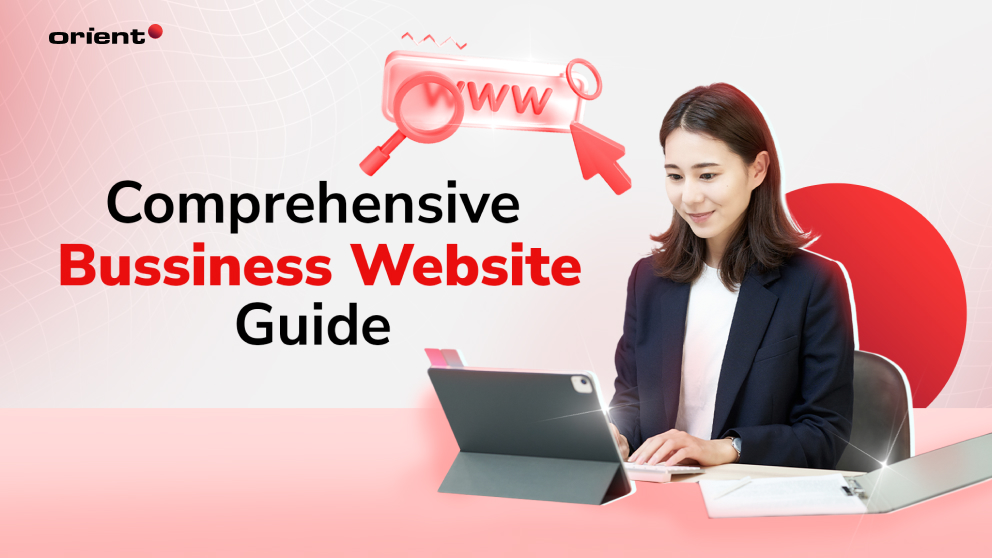How To Make a Website for a Business: The A-to-Z Business Guide

Content Map
More chaptersEvery business needs a website. It serves as an online spokesperson for your company, particularly in response to inquiries from clients about the goods, services, and special offers. You are probably losing out on approximately 66% of the global business chances if you are trying to conduct business the old-fashioned way. There are approximately 5.3 billion Internet users worldwide, and 98% of them use search engines at least once a month. It will be hard for those users to find your business if it doesn’t pop up after a quick Internet search.
But then again, building a website seems like a daunting task. Perhaps you don’t think of yourself as tech-savvy, or perhaps you’ve never built a website. Worry not, as this is your guide to how to make a website for a business.
What You Can Achieve with a Business Website

Stronger Credibility
Before the Internet, businesses only needed to put up a billboard ad to prove their credibility or appear on a TV ad. Nowadays, however, that isn’t enough anymore.
Without a website, customers are most likely to question your business’ legitimacy. Business websites are virtual business cards, a place where customers can refer to and better understand you before deciding to do business with you.
Bear in mind that first impressions are crucial, and your company’s website is what conveys that first impression. Make sure that your website is well-designed and up-to-date and tells your customers what they need to know.
Brand Voice
A company’s brand voice is the unique character it crafts to communicate with its target audience across multiple channels. Your brand voice is how you communicate your core values, the problems your goods and services address, and the solutions you offer. A brand voice is how a potential customer learns about your business and likes it.
This is why you need to take control of your business’ perception. What better way to do so than by writing your own story and spreading your messages, visions, and missions through a well-crafted website?
Appearance on Search Engines
Once you have your website in place, there is a chance of your business showing up as a Google or Bing search results. This is achieved by optimizing the website for search engines. By simply obtaining more eyeballs, you are increasing your customer base, and the chance of converting customers also goes up. We will dig more into content optimization in the following parts of the article.
Create a Website in 8 Steps

It doesn’t matter whether you are an established enterprise or a small business; building a website is essential in the golden era of information. It establishes your business as a credible organization. Following are nine expert steps for the purpose of building a quality website - one that is professional, visually appealing, and with solid functionality.
Step 1: Draw Up a Digital Strategy
Benjamin Franklin once said, “By failing to prepare, you are preparing to fail.” Hence, before we focus on the nitty gritty, let’s first zoom out and take a look at the bigger picture. It is time to grab a pen and paper and work out a clear vision for the website.
Goals
Every customer clicks on a business website with certain expectations. No one wants to scroll up and down a web page that doesn’t provide them with the service or product they are looking for. Therefore, whether your website goal is to provide helpful information, generate leads, raise brand awareness, or act as an online store, let your visitors know from the very homepage. Every other component on the website pages should reinforce this goal.
Target Audience
Who did you have in mind when you first started the business? Having a clear target audience in mind affects numerous aspects of the website design, like the choice of imagery, color scheme, or font.
Competitor Research
Researching competitors helps you gain a deeper understanding of your own company. You’ll know what works and what doesn’t the possible advantages and disadvantages, and you’ll be more equipped to align with industry standards.
Step 2: Pick & Register a Domain Name
Basically, a domain name is a unique internet address of your website. For example, orientsoftware.com is a unique domain name. You can choose whatever domain name you desire, but here are a few tips to help you get off with a better start:
- The domain name should be professional, descriptive, easy to remember, and relevant to the business.
- Steer clear of hyphens, numbers, abbreviations, and acronyms.
- When choosing a top-level domain (TLD), which is the suffix at the end of the address like .com or .net, aim for the traditional ones like we just mentioned. They are often more expensive but also give your business more authority.
- If someone has already chosen the name you want, you can always buy the domain from them, but it can be costly.
Step 3: Choose a Web Hosting Service
After choosing your domain name, you need to purchase it through a domain registrar like Squarespace, Wix, GoDaddy, or WordPress. You still need to find a web host. It digitally stores your website files, images, and codes.
Depending on your business demand, you can choose from a hosting provider with pre-made templates or host your own website. Most small businesses choose the former option since it is more affordable. You can choose from all-in-one hosting companies like WordPress or Wix if you don’t have much coding experience.
Make sure that your hosting service of choice comes with tech support and a Secure Sockets Layer (SSL) certificate. This is a global standard security technology that adds HTTPS at the front of a website’s URL for secure connections and protection of sensitive information.
Step 4: Build Your Website
Plan Your Website Structure
It is time to map out the pages of your business website. The site map’s complexity depends on the number of website categories and the website content. However, there are a number of pages expected, even if it is a simple site:
- Home page
- About us page
- Services page
- Contact us page
- Other pages are FAQ pages, Resources pages, Testimonials from previous customers, etc.
Here are additional tips for when you are setting up the web pages:
- Don’t hesitate to use multiple pages for one aspect of the website when necessary.
- Each page should be driven by the main goal of the website.
- Place your Call to action (CTA) strategically on the web page.
Choose a Website Builder of CMS
There are many ways to build a website. You can choose to use website builders like Wix or WordPress (there are also free website builders like Zoho), opt for Content Management Systems (CMS) like Joomla or Drupal, or hire a dedicated team of developers to build a website from scratch for you - a team of experts from Orient Software is a good place to start. It all comes down to your budget, the purpose of the website, how familiar you are with building a website, and the features you wish to add.
Step 5: Add Content and Images

After you finish setting up the rough structure of the web pages, it is time to add engaging content. This is also when you make tweaks and add more pages where needed.
Great website content is one that is clear, engaging, and provides value to its visitors. Customers should be able to understand what your business is doing within seconds of reaching the homepage. Other types of content to include in your website include information about the products or services you are selling, contact details, blog posts to position yourself as an expert in the field, and the story of how you started the business.
When adding images to your page, make sure they are relevant and similar in color and lighting. Avoid using stock photos, as this is the fastest way to turn a great website into a mediocre one.
Step 6: Search Engine Optimization (SEO)
SEO is the process of improving your business website in order to rank higher in SERPs (search engine results pages), primarily Google. Search engine optimization (SEO) is what makes people find you. In addition to social media accounts, having good search engine rankings will help your business increase its customer base.
With the ultimate purpose of driving organic traffic and increasing visibility, there are a few key practices you need to keep in mind:
- Blog posts are a great content marketing tool. To write SEO blog posts, conduct thorough keyword research, and add internal and external links.
- Intentional use of relevant phrases or keywords in your web pages and blog posts will help you drive traffic.
- Write and publish new content consistently. Do regular content audits to make sure they are performing well on Google and other search engines.
- Set up speed improvement tools.
- Don’t forget to optimize your images. Add alt text to the images and compress their size so they load quickly and don’t slow down the site’s loading speed.
Step 7: Review and Publish Your Website
Congratulations! After all that hard work, it is finally time to publish your website and welcome its very first visitors. However, double-check the following to make sure everything is in top-notch shape:
- Proofread the content to make sure there are no errors or content holders left behind.
- Check and make sure there are no broken links.
- Test the website across different browsers like Google, Safari, Mozilla Fox, etc. Check to see if the content works properly across all kinds of devices.
Once you are confident everything is ready to go, hit publish and let your friends know about your new website!
Step 8: Maintain Your Website

A great website is one that is regularly updated and maintained. This includes frequently updating blog posts, industry events highlights, and more. Make design tweaks if they are outdated. Last but not least, check your hosting service’s security policies on a regular basis to make sure your site isn’t vulnerable. Security should always be a top priority of your website.
Building a website doesn’t have to be a painstaking task. If you still want professional assistance to bring your vision to life, Orient Software is more than happy to help you build a website that meets your needs and exceeds your expectations. Contact us today, and let us help you take your business to the next level!







